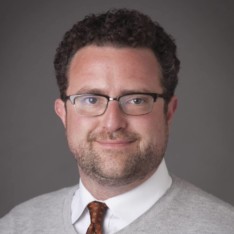Four Conclusions You Can’t Draw From Data on School Shootings
Confirmation bias, the “tendency to search for, interpret, favor, and recall information in a way that confirms one’s preexisting beliefs or hypotheses,” is extremely well-documented. It can increase the noise but decrease the substance in policy debates on any number of issues. The 2008 financial crisis, for example, seemed to make most economists simply double down on whatever position they already held on government regulation of financial markets.
The role of recent school shootings in our debate over gun rights and policy casts confirmation bias in a tragic light. Advocates of stricter gun control laws take the idea that such legislation would reduce these incidents almost as gospel. Advocates for gun rights often respond that the real way to stop shootings is for more school workers to have guns on site. Both of these ideas hold appeal in the abstract to people with already passionate views on the issue, but we have a problem when crossing the line from theory to empirical fact. I took a look at data on school shootings in the last 30 years, and the only conclusion I could draw is that these events are far too rare to inform policy ideas on any side of the issue.
I do not question that these incidents are relevant from a moral standpoint. I have no doubt that virtually everyone would love to wipe such atrocities from the face of the earth. But when we try to use empirical facts on school shootings to support whatever our position may be, we are on very shaky ground. School shootings are too rare to provide any solid empirical facts on which to base policy claims.
My dataset (from Wikipedia) described every shooting incident in a U.S. school since 1990. I narrowed the scope to every incident in a K–12 school that involved at least one death other than the shooter’s. Here are four examples of claims commonly put forward by people on various sides of the gun policy debate that need to look beyond these rare and tragic events to find support:
- School shootings happen frequently or are getting more frequent. The number of gun-related homicides in the United States tends to fall between 10,000 and 15,000 per year, while fatalities from school shootings averaged just over 7 per year since 1990 — not even 0.1 percent in all but the worst years. The average number of incidents per year is around three, meaning year-to-year variation ends up swamping any possible increase with time. The estimated linear time trend is near zero, also suggesting no relationship.
- More laws restricting gun ownership would reduce these incidents. The number of shootings is far too low to compare with changing gun laws, either over time or by state. That leaves us with anecdotal evidence, such as how weapons used in a given shooting were acquired. It’s hard to learn anything here because with such small numbers, there is no way to sort out issues like whether the shooter would have acquired another weapon or what they would have done had that been impossible.
- More guns in the hands of on-site school staff would reduce these incidents. Because of the small number of incidents, it is not possible to say with confidence that unintended consequences of more guns on school grounds wouldn’t offset any good outcomes. If there were three fatal shootings per year involving the wrong person getting their hands on one of these guns, or a disturbed school staff member, we would be right back where we started. These are terrible possibilities, but possibilities that anyone arguing for more guns on school grounds must consider.
- Private schools are more effective at preventing shootings than public schools. There were 89 shootings as defined above since 1990, with 83 (93 percent) happening at public schools and only 6 (7 percent) at private schools. Private enrollment for high schools hovers around 10 percent, meaning private schools are slightly underrepresented in the shooting statistics, but all it would have taken is a couple more shootings taking place at private rather than public schools to sway the result in the other direction.
School shootings are a horrible problem everyone would like to solve. But when people try to use them to support most policy interventions, they are typically drawing conclusions that fit their own worldview from a very limited set of facts. While such arguments can be perfectly well-intentioned, they run the risk of muddying the waters in debates of crucial importance to our society.



